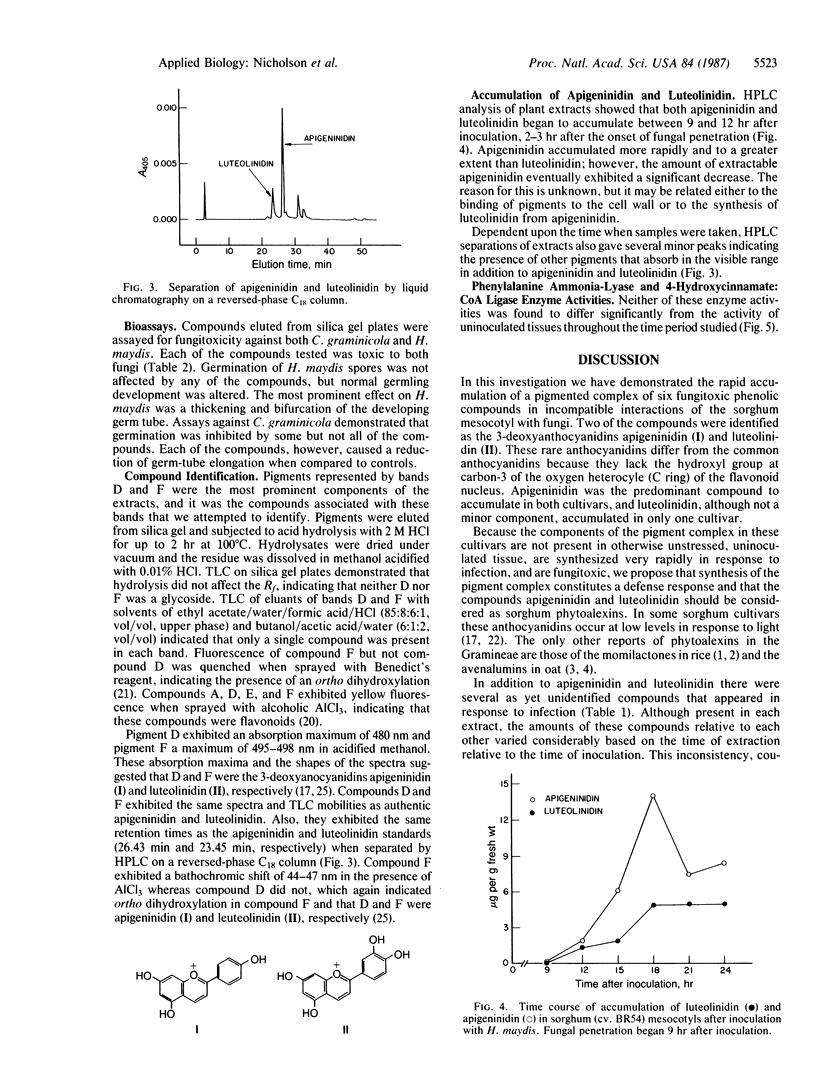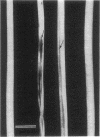Abstract
Infection of the sorghum mesocotyl by Helminthosporium maydis (a nonpathogen) and Colletotrichum graminicola (a pathogen) resulted in the rapid accumulation of a pigment complex by two sorghum cultivars. The components of the complex were fungitoxic. The principal compounds have been identified as the 3-deoxyanthocyanidins apigeninidin and luteolinidin. Apigeninidin accumulated in both sorghum cultivars in response to infection and was the predominant pigment. Luteolinidin accumulated in only one of the cultivars. Because of the speed of synthesis, occurrence only in response to inoculation, and fungitoxicity of the individual components, we propose that synthesis of the pigment complex constitutes a defense response and that the compounds apigeninidin and luteolinidin should be considered as phytoalexins.
Keywords: 3-deoxyanthocyanidins, resistance to fungal infection, Sorghum bicolor
Full text
PDF




Images in this article
Selected References
These references are in PubMed. This may not be the complete list of references from this article.
- BRAY H. G., THORPE W. V. Analysis of phenolic compounds of interest in metabolism. Methods Biochem Anal. 1954;1:27–52. doi: 10.1002/9780470110171.ch2. [DOI] [PubMed] [Google Scholar]
- HARBORNE J. B. Spectral methods of characterizing anthocyanins. Biochem J. 1958 Sep;70(1):22–28. doi: 10.1042/bj0700022. [DOI] [PMC free article] [PubMed] [Google Scholar]
- Stafford H. A. Flavonoids and related phenolic compounds produced in the first internode of Sorghum vulgare Pers. in darkness and in light. Plant Physiol. 1965 Jan;40(1):130–138. doi: 10.1104/pp.40.1.130. [DOI] [PMC free article] [PubMed] [Google Scholar]
- Stafford H. A. Regulatory Mechanisms in Anthocyanin Biosynthesis in First Internodes of Sorghum vulgare: Effect of Presumed Inhibitors of Protein Synthesis. Plant Physiol. 1966 Jun;41(6):953–961. doi: 10.1104/pp.41.6.953. [DOI] [PMC free article] [PubMed] [Google Scholar]



